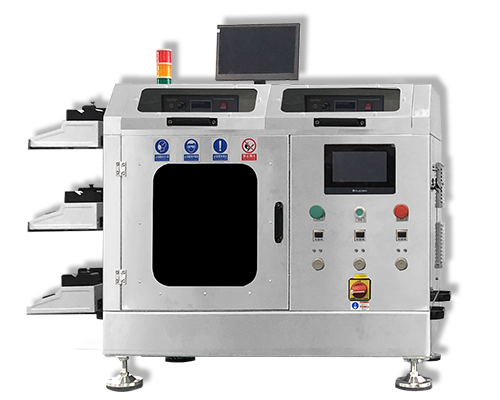Implantable Polymer Materials
In minimally invasive interventional therapy devices, polymer materials can be used to meet the needs of carriers that need controlled release systems, such as covered stents, embolic agents, biodegradable stents and therapeutic drugs. Such devices usually coexist with the human body for a long time after implantation. Therefore, the polymer materials used shall ensure good antithrombotic property, excellent compatibility, stable physical and chemical properties and high mechanical strength.
1. Membrane covered support material (PU, PTFE)
The membrane covered stent is divided into two parts: the membrane covered stent and the stent. The membrane covered stent (a layer of polymer membrane) is attached to the surface of the metal stent and is implanted in the human body for a long time with the stent. Therefore, the polymer materials used should have excellent biocompatibility and good mechanical properties, and the mulch used in the treatment of different diseases usually needs to have specific functions. At present, polyurethane (PU) and expanded polytetrafluoroethylene (ePTFE) are the most widely used materials.
PU has high mechanical strength, anti-aging, corrosion resistance, stable chemical properties, strong support and can be fully developed. On the other hand, the preparation process of PU is relatively simple. You can use a suitable solvent to dissolve the polyurethane resin into liquid, and then attach it to the bracket for drying.
For ePTFE, it can be formed by expanding the PTFE tube under controlled conditions during its preparation. The structure of the prepared ePTFE will produce many tiny pores, which can be modified to give it more specific functions (such as breathability, microporous structure, chemical stability, low friction coefficient, etc.). During the decades of observation, ePTFE is non allergenic, non-toxic and carcinogenic. Vascular tissues or other tissue cells in the human body can grow on the scaffold through the microporous structure, without forming fibrous cysts and rejection behavior with human environmental tissues.
2. Embolic polymer material (PVA)
Embolization plays an important role in minimally invasive interventional therapy, which is usually used in tumor treatment, bleeding control and elimination of organ functions. When passing through the intravenous catheter or artery, it is often necessary to artificially inject the plug into the supply vessel or part of the lesion, at this time, it is necessary to block the vessel or interrupt the blood supply. This requires that the embolic agent can ensure the embolic time (days to weeks) without affecting human activities. The commonly used embolic agents include absorbent solid embolic materials, permanent solid embolic materials, micro spring coil embolic materials, etc.
Among the absorbable solid embolic materials, gelatin sponge is the most prominent because of its excellent water swelling, compressibility, antigenicity, low cost and no obvious biological toxicity. However, the gelfoam embolic agent can only temporarily block the human body. It is often used for embolism and hemostasis before tumor resection, small artery hemorrhage embolism, etc.
PVA particles are commonly used in permanent embolic materials, which are insoluble in water and do not degrade in vivo, and have excellent biocompatibility. When it accumulates in the blood vessels, it will block the blood vessels to form thrombus, and then block the collateral circulation established during the embolization treatment.
However, polyvinyl alcohol is easy to produce “sticky tubes”, which will bring patients pain and complications. Micro spring coil embolic material is a kind of mechanical embolic material. During the treatment, it will ligate the damaged blood vessels in the body under the premise of protecting the normal body tissues through the microcatheter under the traction of the guide wire.
3. Degradable polymer scaffold (PLLA)
In recent years, biodegradable polymer scaffold materials have attracted extensive attention. Among them, polylactic acid material (PLLA) is outstanding. It has the advantages of solubility in vivo, high tensile strength, high modulus and mechanical properties.
The mechanical strength of PLLA stent is similar to that of metal stent, so it can be directly used in the preparation of minimally invasive interventional stent. After the bioabsorbable stent is implanted into the human body, its supporting force is equivalent to that of the metal stent within one year, and the task of supporting blood vessels to help rebuild is completed. It will gradually degrade into water and carbon dioxide in 2-3 years or so, and be completely absorbed by the body. There will be no foreign matter in the body.
Due to direct contact with patients in the medical process, the performance requirements for medical polymer materials are very strict, which must meet the characteristics of good biocompatibility and strong mechanical properties. Especially in case of direct contact with the skin, blood or body fluid of the patient, these medical devices containing polymer materials will be implanted or placed in the patient’s body, either long or short.
With the progress of science and technology and the development of the times, the medical mode gradually tends to be fast, stable, healthy and reliable, and minimally invasive intervention medicine will play a crucial role in the future. By promoting the R&D and application of biomedical polymer materials in medical devices, the role of minimally invasive interventional medical devices and polymer materials in medical services will be fully played.
Ultrasonic drug stent coating machine is a high-performance stent spraying equipment developed for stent series products, mainly used for drug coating on the surface of stents.
- The liquid medicine utilization rate reaches 95% and above.
- The maximum diameter of the stent is 60mm, and the maximum length can be extended to a fixture of 100mm.
- Compared with dip coating, ultrasonic spraying will be much thinner, saving paint and avoiding waste.
Chinese Website: Cheersonic Provides Professional Coating Solutions


